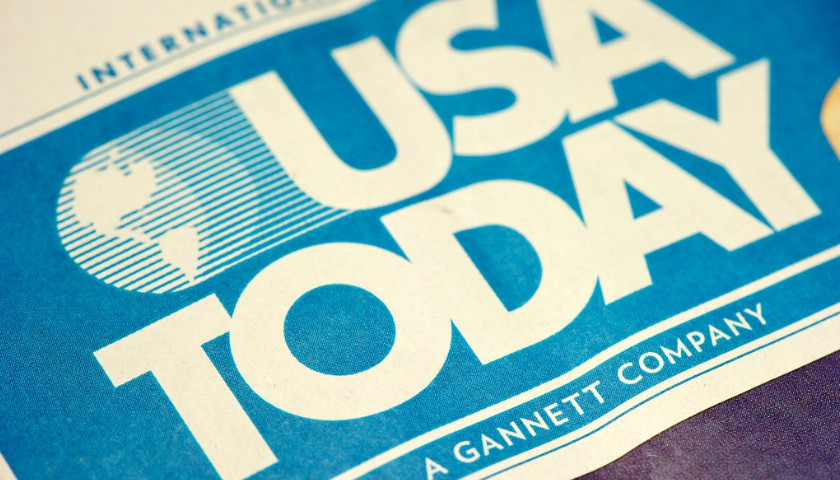by Ray McCoy
Hotel guests used to enjoy the morning courtesy of a complimentary newspaper before staying in or heading out on their way. Many of them opted not for the local paper of record but for the most generic one, USA Today, published by the conglomerate Gannett. Unlike the verbose and cerebral New York Times or Washington Post, it was written with the casual reader in mind. But the era of the newsroom has largely disappeared, and with it, perhaps also the daily newspaper.
First published only in 1982, USA Today’s founder Al Neuharth embraced a universalist approach to news publishing, panned as the “McPaper,” that was at odds with traditional journalism. One of the features that helped catapult USA Today to success was its ability to keep East Coast sports readers updated the morning after to scores that would have not made it in before their local home delivery edition went to print. It also began to issue sports weekly sections that took the reader in depth into the leading trends, first in Major League Baseball, and later in other sports. No one would have mistaken this for gritty hard-nosed reporting, but it was never meant to be that.
Gone Woke or Just Plain Broke?
Print media was in deep trouble long before the current politicized climate. It is said that journalist Roger Fidler foretold it in the 1980s, even developing the first digital newspaper known as Viewtron for the Knight Ridder chain. The 24-hour news cycle introduced by round-the-clock news channels like CNN meant that gradually, audiences wouldn’t have to wait until morning to hear about any particular event.
Part of the reason newspapers have survived, besides residual consumers used to the format, is that they have typically been considered more serious and deliberative than local radio and TV news networks. But respect will not be enough to guarantee them a future. USA Today broke with tradition in 2016 when the paper first opined against Donald Trump and then four years later endorsed Joe Biden. In September 2021 its editor-in-chief Nicole Carroll published a “backstory” reflecting how USA Today’s newsroom was now 51.7 percent female and proceeded to list all of the different ethnic categories of the journalists, admitting that she was comparing her staff composition to the 2019 U.S. Census Bureau data.
It would all make some sense if USA Today’s reasoning was tethered to a commitment to retain some semblance of its long-standing policies of objectivity and even-handedness but, to the contrary, it has abandoned those too. Opinion columnists like Rex Huppke lean into third rail issues as part of the liberal-Left chorus, chastising conservatives for criticizing the Library of Congress for loaning James Madison’s flute to Lizzo, who proceeded to use it in an obscene performance complete with twerking. Not long ago they published an op-ed against solitary confinement, ironically written by Donna Hylton, who had been convicted for her role in the torture, rape and murder of a real estate broker in 1986. After being paroled in 2012, Hylton has reinvented herself as an advocate for inmate rights and participated in the partisan Women’s March in 2017 that featured open calls to violence against the new Trump Administration. Neither the opinion piece nor the editorial byline feature any mention of the nature of her crime or her political activities since leaving prison.
Yet another column lists the issues of gun violence, climate change, and abortion rights as ones where Generation Z will lead America to lasting change. The author mentions how she counseled a young activist to expect to be attacked for being partisan. There’s no problem with USA Today running such a piece, if it had remembered to mention in the byline that the columnist Connie Schultz is the wife of U.S. Senator Sherrod Brown (D-Ohio). While the left-skew of the paper is evident in its own pages, USA Today is also dealing with Gannett being attacked by liberals for having right-wing printing clients, including the Epoch Times.
The drifting editorial policies of USA Today may be the least of its worries. As a major player in a shrinking market, Gannett is facing a future where fewer news readers than ever are dependent on a daily paper when they can already read stories updated to the minute on their phone from numerous sources, including from local sources. According to the Poynter Institute, even the climbing digital subscription numbers are not enough to compensate for the lost print advertising and subscription revenue. To cut costs, the company is pursuing 400 layoffs, leaving a further 400 positions vacant rather than hiring, and selling between $65 and $75 million of assets.
Investors have responded to the adverse market conditions this year, with the company’s stock losing more that 75 percent of its value, threatening to return it to the April 2020 low of $0.72 per share. But the pain may just be beginning. On October 12, CEO/Chairman Michael Reed announced further cost-cutting measures: a pause in the corporate 401(k) match, a five day unpaid furlough in December, and voluntary severance pay for those who choose to leave. Reactions from the media were panicked, given what it portends for the industry at large.
Should Gannett go under, reporters in numerous middle or larger metro areas will be in jeopardy. In cities such as Rochester, Tallahassee, Jacksonville, Columbus, Cincinnati, and Memphis the paper of record is a Gannett property in addition to USA Today. The irony of that scenario is that the only people who may miss these institutions will be the ones writing the story about their demise.
– – –
Ray McCoy is an independent journalist living in the Midwest. His work has also appeared in American Thinker and The Federalist. You can subscribe to receive his stories directly through the “Razor Sharp News Chronicle.”
Photo “USA Today Newspaper” by SoQ錫濛譙. CC BY-NC-ND 2.0.






USA Today was/is such a liberal rag that I refused to read it during my many days on the road. Typical of all Gannett publications.